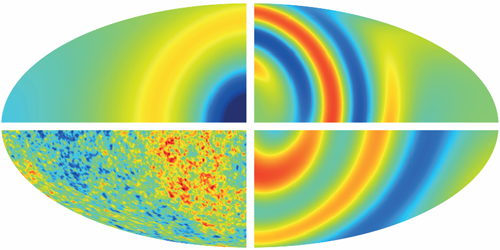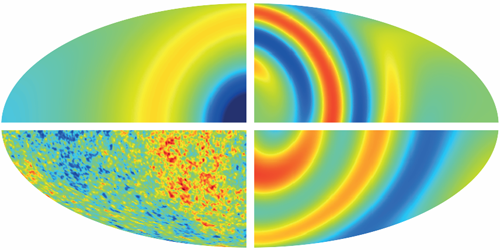Anisotropy Limits for the Universe
On average, the Universe looks the same no matter which way you look. However, it is possible that the cosmos is rotating—or has some more complicated geometry—in which case the Universe’s expansion rate would vary with direction. A group of researchers has looked for these forms of anisotropy in maps of the cosmic microwave background (CMB). By considering the whole gamut of anisotropy models, the team places the tightest constraints so far on an intrinsic directional dependence to the cosmic expansion.
Our best measure of isotropy is the CMB, which shows that the Universe is nearly uniform across the entire sky. There are small fluctuations in the CMB (at the level of one part in ) that can be explained as perturbations in the density of the Universe. However, some of the CMB fluctuations could be the result of anisotropic expansion, which would shift the light wavelength depending on its arrival direction. An anisotropic Universe would be incompatible with certain cosmological models, such as inflation.
Previous studies have generally restricted themselves to models of anisotropy that are represented as a rotation (a so-called vector mode anisotropy). Daniela Saadeh of University College London and her colleagues have taken a more generic approach, which includes anisotropic models based on the full-range of geometric modes (scalars, vectors, and tensors). The researchers vary the parameters of this generic model and compare it to CMB data from the Planck satellite, whose polarization measurements are highly sensitive to anisotropic models. The results show that anisotropic models are inconsistent with observations. According to the authors’ new limits, the odds that our Universe is anisotropic are 1 out of 121,000.
This research is published in Physical Review Letters.
–Michael Schirber
Michael Schirber is a Corresponding Editor for Physics based in Lyon, France.





